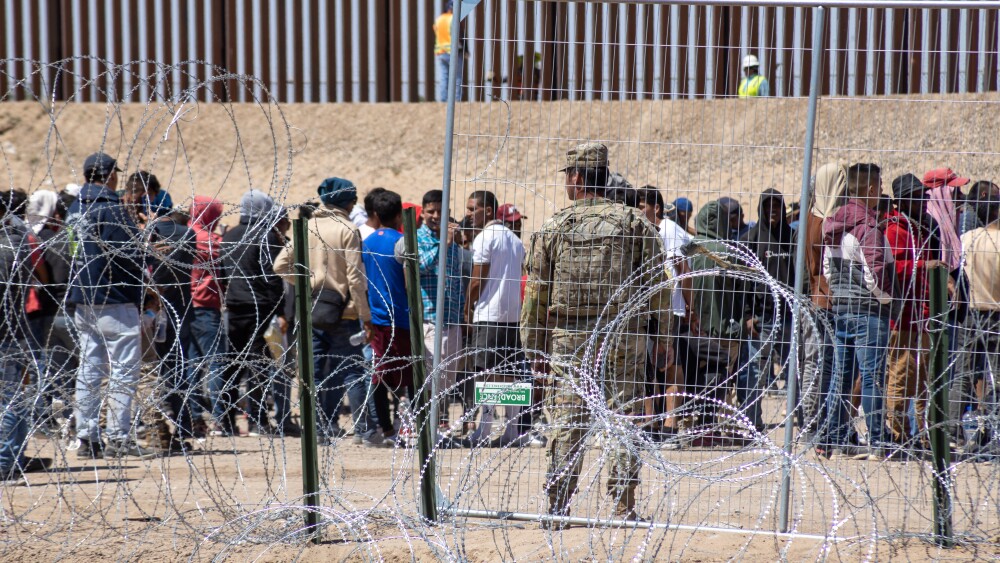Since 2020, U.S. Customs and Border Protection has encountered approximately 1,740 Iranian nationals at the U.S.-Mexico border. While this number is minuscule in comparison to the number of encounters with immigrants from Latin American countries, it is an exponential increase from the 90 Iranian nationals encountered at U.S. land borders from 2000 to 2019.
The relatively low numbers of Iranian border-crossings have left policymakers with little awareness of the possible security risks associated with illegal Iranian migration. While many appear to be genuine humanitarian or economic migrants, Iranian illegal immigration patterns have unique characteristics that warrant greater scrutiny.Understanding these characteristics is important for determining how Iran is most likely to seek to exploit our immigration system for the purposes of infiltration if the United States and Iran enter open conflict.
Iranian-led forgery networks operate out of countries like Thailand and Brazil, and enable illegal crossings at airports around the world.
The most troubling aspect of illegal Iranian migration is the continued existence of sophisticated Iranian passport forgery rings. Iranian-led forgery networks operate out of countries like Thailand and Brazil, and enable illegal crossings at airports around the world. According to my findings from fifteen notable case studies involving Iranian passport forgeries, Iranians traveling with forged documents tend to do so under the pretense of later claiming asylum.
However, there have been at least two cases of Iranian nationals using forged passports to carry out suspected terrorist activity. In 2019, two Iranians were caught in Argentina with forged Israeli passports around the anniversary of the 1992 bombing of the Israeli embassy in Buenos Aires by Hezbollah. In 2013, security personnel at the Israeli embassy in Katmandu apprehended an Iranian man obtaining a fake Israeli passport and accused of planning to carry out attacks on Israelis in Nepal.
Passport forgeries are the most likely and serious avenue through which Iran could infiltrate the U.S. immigration system. Fake passports allow Iranian operatives to get around the recently announced travel ban and the otherwise widespread restrictions on Iranians throughout the Western hemisphere. Iran’s history of passport forgeries shows a familiarity with this approach, and their tendency to choose Israel as the country of origin for their forgeries also allows them to create headaches for Israeli travelers who may have to face additional screening to ensure their documents are legitimate. The experience Iranian forgers have in Brazil is especially concerning given Brazil’s recent history as a staging ground for intelligence operations by other American adversaries such as Russia.
Recent security measures at the southern border have made it more likely that Iranian operatives will be apprehended.
On the other end of the security spectrum, direct infiltration via land crossings at the U.S.-Mexico border is unlikely for a number of reasons. First, recent security measures at the southern border have made it more likely that Iranian operatives will be apprehended and have removed the possibility of entering via asylum. Second, the routes known and used by Iranian migrants are particularly arduous. Unlike other nationalities who can easily fly directly to Mexico, the majority of illegal Iranian migrants must fly from Turkey to Brazil and then cross by land through Bolivia, Peru, Ecuador, Colombia, Panama, Costa Rica, Nicaragua, Honduras, Guatemala, and Mexico to reach the U.S. border.
Because of this, many Iranian smugglers now only offer services starting in Central America. More aggressive immigration enforcement throughout the region has also led to a virtual collapse in illegal Iranian immigration. In January 2025, Colombia recorded 180 encounters with Iranian migrants, Panama recorded 100, and Honduras recorded 130. By May 2025, Colombia and Panama both recorded zero and Honduras recorded only three.
As U.S.-Iran tensions escalate, Tehran could use what it has learned from illegal Iranian immigration to exploit vulnerabilities in our immigration system. Future Iranian infiltration attempts will likely leverage third-country nationals and diversify beyond Israeli passport forgeries to avoid pattern detection. The 2026 World Cup across North America presents a particularly attractive target window, when visa processing will surge and security resources will stretch thin. Policymakers should pay closer attention to the security risks posed by illegal Iranian migration, and focus more on passport forgeries than border crossings.




